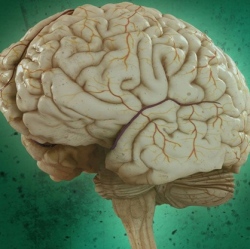
Could very subtle changes represent something bigger than simply maturing tastes? Researchers think they could. They’ve studied brushstrokes in thousands of paintings from famous artists, and found that certain variations in the works over the artists’ careers can point to an ongoing decline in cognitive function.
This seemingly far-fetched idea is based on a technique called fractal analysis. Fractals are self-repeating geometrical patterns that can be seen in the natural world in snowflakes, river networks, tree branches and even hurricanes and lightning bolts. For this reason, they are referred to as the fingerprint of nature, but the researchers believe they can reveal signs of neurodegenerative disorders, too.
What led them to this conclusion was the analysis of a total of 2,092 paintings from seven famous artists. The group included Salvador Dali and Norval Morrisseau, who both suffered from Parkinson’s disease; James Brooks and Willem De Kooning, who both suffered from Alzheimer’s disease; and Marc Chagall, Pablo Picasso and Claude Monet, who all aged normally.
By analyzing changes in fractals in the brushstrokes over the course of each artist’s career, the team says a clear pattern emerged whereby the dimensions in those suffering from neurological deterioration differed from those that aged healthily.
"Art has long been embraced by psychologists an effective method of improving the quality of life for those persons living with cognitive disorders," said Dr. Alex Forsythe, leader of the research team. "We have built on this tradition by unpicking artists ‘handwriting’ through the analysis of their individual connection with the brush and paint. This process offers the potential for the detection of emerging neurological problems."
Rather than a cut-and-dried way of diagnosing cognitive disorders, the researchers hope that the findings will spark interest in researching new ways to detect neurological disease in its early stages.
